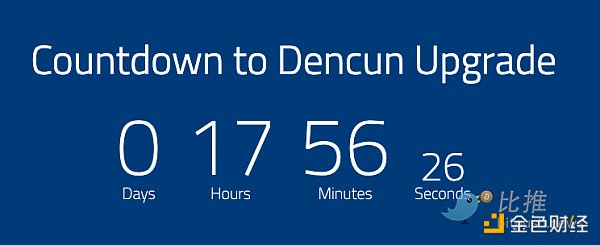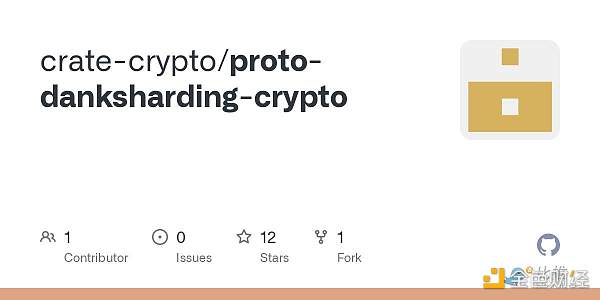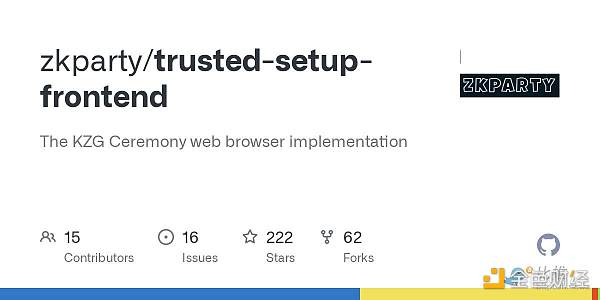Source: Coindesk, compiled by: BitpushNews Mary Liu
The Ethereum Dencun upgrade is expected to launch around 9:55 AM ET on March 13, and a new Ethereum Improvement Proposal (EIP) named "proto-danksharding" or EIP-4844 will Being activated will open up a new era of lower fees for the auxiliary network (L2/Rollup) running on Ethereum.

Dencun is taken from the combination of Deneb + Cancun, which means two things happening at the same time on the Ethereum consensus layer and execution layer. This upgrade will be the biggest update for Ethereum since the Shapella upgrade in April 2023.
Proto-danksharding
Dencun will introduce Proto-Danksharding, which is a a long process of transitioning from theory to practice (Vitalik Buterin was first mentioned in 2019), which changes the way Ethereum stores data.

Dencun will not store all data directly on the immutable execution layer of the Ethereum mainnet (expensive + computationally intensive), but is to introduce a new temporary way to store "blob" data that is cheaper. "blobs" may not sound like that, but they are actually a common concept in computer science. Similar data management blobs are available in programming languages such as Javascript and Python.
Proto-danksharding is Ethereum's first attempt at "sharding", a group of blockchains that break down into mini The technology of sharding (or mini-chains) to process more transactions cheaply.
Although the final version of sharding is still several years away, Proto-danksharding can help solve Ethereum's high gas fee problem in the short term by reducing the fees on the L2 network.
Origins of Proto-Danksharding?
Proto-Danksharding is based on two Ethereum researchers Dankrad Feist and Proto Lambda is named after them who proposed this change.
Proto-Danksharding The full rollout of Danksharding is a Necessary conditions, Danksharding will further simplify data storage and will take several years to accomplish.
Also, despite the word "sharding" in the name, neither Danksharding nor Proto-Danksharding "shards" the database (or split) into smaller parts known in computer science the traditional way (the original plan for scaling Ethereum). In a sense, Dencun's introduction of Proto-Danksharding was a serious departure from Ethereum's original roadmap, and it was chosen because it was easier to implement.

The first step in establishing Proto-Danksharding took place in 2022 – the largest “Trusted Setup” ceremony at that time. Named after the researchers (Aniket Kate, Gregory M. Zaverucha, and Ian Goldberg) who created the key components of Blob storage on Ethereum, becoming Thousands of people attended the KZG ceremony, which was a way for the Ethereum community to collectively generate the secret string of random data needed for the original danks sharding effort.
In the Gas-free era of Ethereum, which sectors will benefit the most?
Dencun will make L2 transactions super cheap - almost cost-free, which will drive almost all activity on Ethereum Switching to these networks, some projects or protocols may incentivize usage by consuming the Gas fees that users would normally have to bear (cheaper than paying for marketing!).
After Dencun, L2 will be able to publish data to Ethereum within a dedicated blob space instead of Forced to pay higher costs to compress data into traditional transactions. In theory, this could help L2 process more data more efficiently, thus reducing costs for end users.
Arbitrum, Layer 2 networks such as Optimism and Polygon will benefit the most from Dencun. These networks help scale Ethereum by bundling users’ transactions and then passing them to Ethereum, where they are settled in bulk. Over the past year, they have become the dominant platform for trading on Ethereum, amassing a multi-billion dollar pool and consistently boasting higher transaction volumes than the main Ethereum chain.
Proto-danksharding will also benefit a new class of blockchains entering the Ethereum race, called the data availability (DA) layer.
Celestia, EigenDA and Avail DA layers help the network store large amounts of data; L2 often uses them to store transaction data. Proto-danksharding can reduce the cost of downloading DA data.
Polygon co-founder Jordi Baylina previously said, "The cost should be reduced, mainly because of this It’s a matter of supply and demand. You have greater supply and greater data availability on Ethereum, so the cost should be lower. How much? We don’t know, it’s hard to predict.”
Optimism Network Main Development CompanyKarl Floersch, CEO of OP Labs The fundamental unlocking of . With EIP-4844 and Dencun, developers across the entire Ethereum ecosystem can build together more seamlessly."
The upgrade, he said, "will allow a loosely coordinated group of developers to truly build systems that deliver holistic experiences that will disrupt the top-down, centrally planned platform user experience they have been used to."
L2 transaction data
According to L2Beat data, the past 7 daysL2< /span>The average transaction volume per second (TPS) of the network is 93.18, while the average transaction volume per second (TPS) of Ethereum is 14.42, and the L2 Scaling Factor multiple is approximately 8.36.

L2fees data also shows that sending ETH on Arbitrum The average cost is $0.24 and the cost to exchange tokens is $0.67. Optimism costs $0.47 and $0.92 respectively, while Polygon costs $0.78 and $2.85.
Fidelity’s report on this upgrade pointed out that L2 fees account for approximately 10% of the total L1 fees. The money manager said the ratio is expected to "decline significantly" following the upgrade.
After Dencun, Ethereum developers will begin to address content for the next upgrade, now called Electra + Petra.
As of now, the developers have not decided what will be included in the package, but one of the most recognized upgrades is called "Verkle Trees". It is a new type of data category that can help nodes store large amounts of data. Verkle Trees development is ongoing中,Buterin once said that Ethereum's individual stakers and network nodes will start from Verkle Trees 's deployment.
 Huang Bo
Huang Bo








